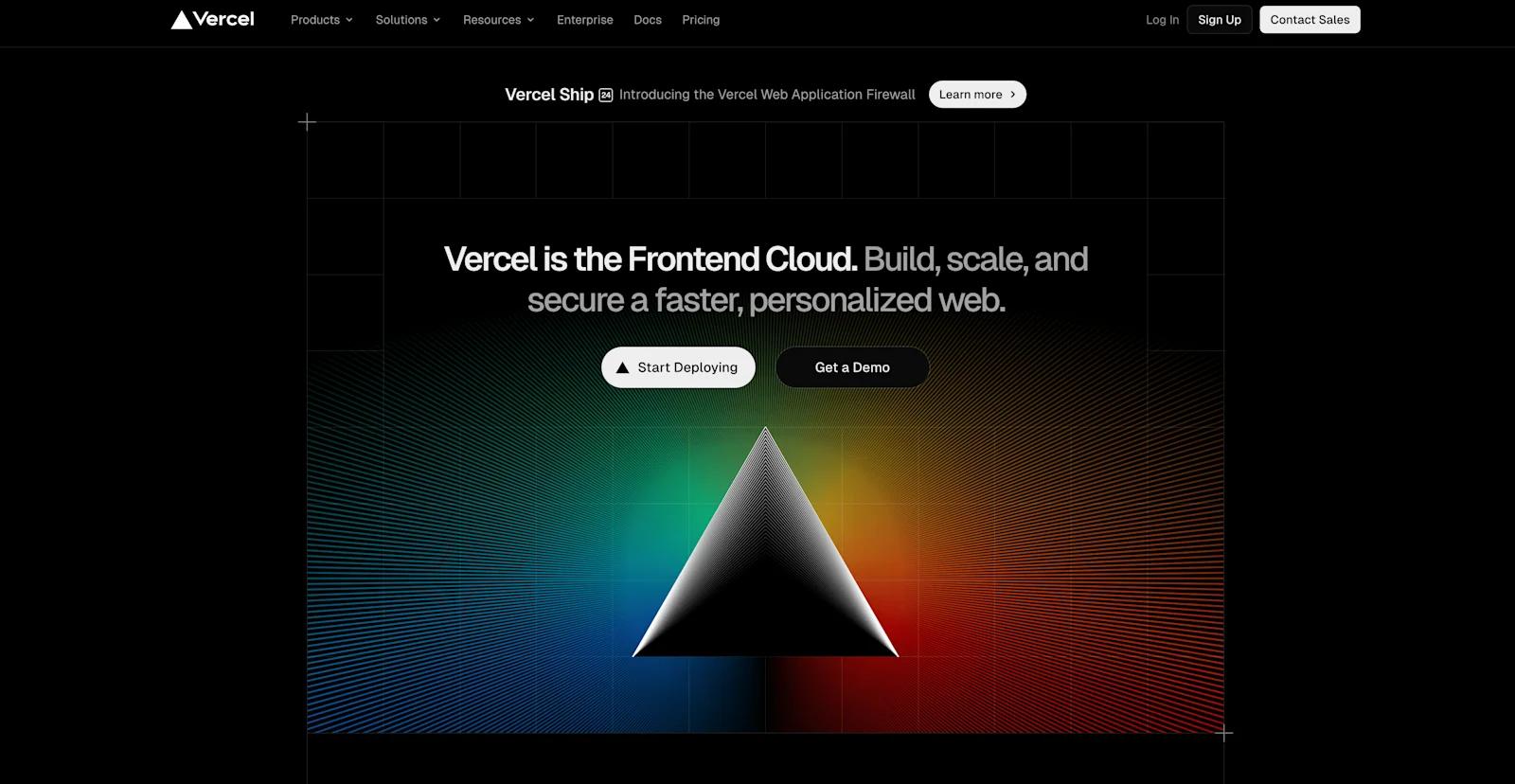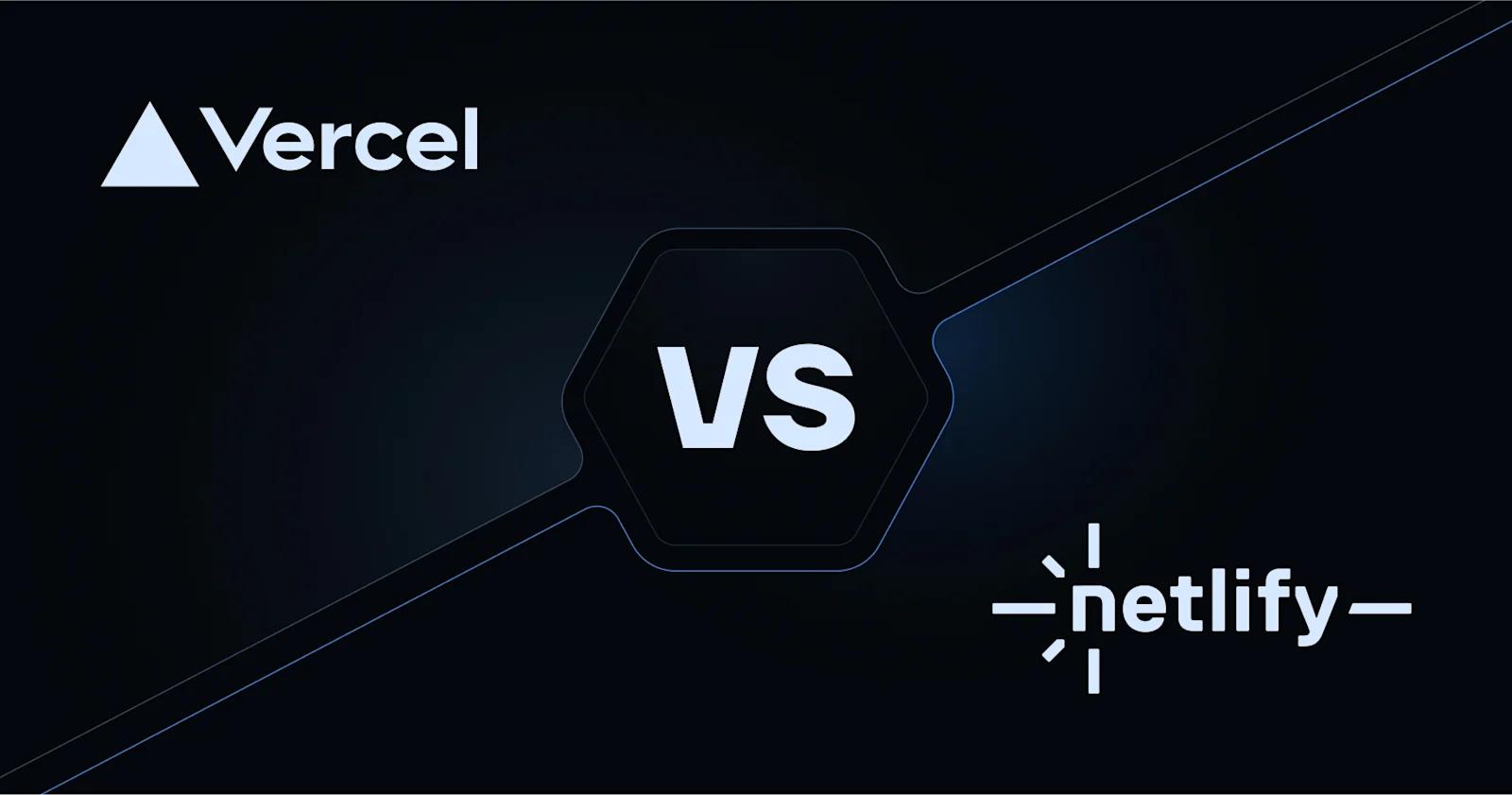Vercel and Netlify have emerged as leaders in the Jamstack ecosystem, offering powerful features for seamless deployment processes, but which one is better suited for your unique needs?
The number of Jamstack websites has doubled since 2020, so if you aren’t aware of the benefits, it might be time to investigate the difference it can make to your business.
In this article, we explore the differences between Vercel and Netlify, focusing on key features, deployment processes, performance, and integrations. By the end, you'll have a clear understanding of which platform best suits your unique needs.
Key Takeaways:
- Both Vercel and Netlify facilitate continuous deployment via Git integration, compatible with various development frameworks.
- Each platform uses a global CDN, ensuring fast and reliable website performance worldwide.
- Both offer serverless capabilities, allowing for backend operations without traditional server management.
- Vercel and Netlify support scalable architecture, making them suitable for projects of varying sizes and requirements, and they adapt easily to changing needs.
What is a Composable Hosting Platform?
A composable hosting platform modernizes web development by supporting the Jamstack architecture, which is known for building fast, secure, and scalable websites.
This type of platform is especially useful because it automates many routine tasks, allowing developers to focus more on coding and less on the technicalities of website deployment.
Key Features of Composable Hosting Platforms
- Automated Builds and Continuous Deployment: Automatically compiles your site and pushes updates live, ensuring your website is always current without manual intervention.
- Site Previews and Atomic Deployments: Offers previews of changes in a live environment and ensures updates are applied atomically, meaning all at once or not at all, for flawless updates.
- Easy Rollbacks and Notifications: Quickly revert to previous versions if a new update fails, with automatic alerts on the status of deployments.
- CDN Integration: Utilizes a Content Delivery Network to enhance website loading speed and performance globally, which optimizes user experience by reducing latency.
By integrating with tools like Git and CI/CD pipelines, composable hosting platforms simplify the entire web development process.
They provide a solid infrastructure that helps deliver content efficiently, ensuring a reliable and swift user experience that not only boosts productivity but also enhances the overall quality and reliability of web applications.
What is Vercel?

Vercel is a cloud platform that empowers developers to deliver web projects efficiently and rapidly.
Constantly improving, and now 150ms faster than the previous version, Vercel is ideal for deploying and managing web applications in a seamless and streamlined manner.
Key Features
Vercel offers a range of key features that enhance the development and deployment process:
- Automated Builds: Vercel automatically handles the build process, freeing developers to concentrate on coding instead of setup.
- Continuous Deployment: Changes to your codebase are automatically updated live, keeping your application current without manual effort.
- Site Previews: You can view previews of your sites before making them live.
- Easy Rollbacks: If something goes wrong, you can quickly revert to a previous version to reduce disruption.
- Notifications: Receive updates on deployments, build successes, and failures to keep track of your project’s progress.
- Content Delivery Network (CDN): Vercel uses a global CDN, ensuring fast and dependable delivery of your content worldwide.
Types of Vercel Plans
Choosing the right plan can feel like picking the right tool for an important job. Each has its perks and limitations, so let’s break them down.
Free Plan Features
The Free Plan is your sandbox. It’s perfect for experimentation and small projects. You get:
- Unlimited deployments
- Custom domains
- Basic bandwidth
It’s a no-cost way to explore Vercel’s capabilities without commitment. But remember, while it’s free, it’s not meant for high-traffic production sites.
Pro Plan Benefits
The Pro Plan steps up with features that cater to teams ready to scale:
- Increased bandwidth
- Enhanced security options
- Priority support
It's the go-to for teams that need more than just the basics but aren't quite at enterprise level yet. Perfect for startups on the rise.
Enterprise Plan Capabilities
The Enterprise Plan is the powerhouse option. It’s all about customization and support:
- Dedicated infrastructure
- Custom SLAs
- Advanced security protocols
This plan is for companies that need robust solutions and can’t afford downtime or performance hiccups. If your operations are mission-critical, this is where you want to be.
Benefits of Vercel Pricing
So why should you care about Vercel pricing? Because it’s not just about the cost—it’s about what you get in return.
Cost Efficiency
Vercel’s pricing aligns with your budget without skimping on essential features. Whether you're bootstrapping or scaling, there's a plan that fits. You get what you pay for, and sometimes, a little more.
Scalability for Growing Teams
As your company grows, so do your needs. Vercel’s pricing scales with increased traffic and usage, ensuring you only pay for what you need. No more, no less. It’s like having a tailor-made suit that grows with you.
Feature Value Across Plans
Each pricing tier offers features that match your technical and business needs. From basic deploys to advanced security, you’re covered. It’s about finding the right balance between cost and capability.
What is Netlify?

Netlify is a cloud-based hosting platform and CDN that specializes in hosting static websites and deploying Jamstack applications.
Key Features
Netlify offers a wide range of features that enhance the development and deployment of Jamstack websites:
- Git-based Deployments: Automatically updates your website whenever you make changes to your code in Git.
- Continuous Deployment: Keeps your site updated with the latest changes without manual intervention.
- Global CDN: Uses a worldwide content delivery network to speed up load times and enhance performance across the globe.
- Asset Optimization: Automatically optimizes assets like images and CSS to speed up your website.
- Team Collaboration: Supports seamless collaboration, enabling multiple developers to work together effortlessly.
These features make Netlify a powerful and user-friendly hosting platform for developers looking for a hassle-free way to host and deploy their Jamstack applications.
Vercel vs Netlify Key Features Compared
Deployment Process
The deployment process of both Vercel and Netlify offer seamless integration with Git, allowing developers to easily connect their repositories and automate the deployment process.
Vercel provides features like continuous deployment, build hooks, deploy previews, atomic deploys, and easy rollbacks, ensuring a smooth and efficient deployment experience.
Netlify also excels in this area, offering git-based deployments, continuous deployment, and the ability to trigger builds using webhooks, giving developers full control over their deployment.
Performance and Speed
Ultimately, both platforms prioritize performance, providing users with reliable and high-performing websites. When it comes to performance and speed, both Vercel and Netlify utilize Content Delivery Networks (CDNs) to ensure optimal content delivery and minimal latency.
Vercel leverages the power of Edge networks to provide fast global access to your websites and applications. The edge network enhances performance by bringing content closer to users, reducing latency and improving load times.
Netlify also offers a global CDN that automatically caches and optimizes assets, resulting in faster loading times. Both platforms focus on delivering high performance through efficient content delivery and asset optimization.
While edge networks provide additional benefits, benchmarks would be required to definitively claim that one platform is faster than the other.
Integrations and Ecosystem
Vercel and Netlify boast comprehensive integrations, providing support for a wide range of frameworks and technologies.
Vercel integrates seamlessly with popular frontend frameworks like Next.js, Astro, Remix, and Svelte as well as CMS platforms like Contentful and WordPress.
Netlify also supports a wide range of frameworks. Additionally, Netlify works with Create React App (CRA) for streamlined React applications.
Both platforms offer extensive documentation and resources to help developers make the most out of their chosen technology stack.
Serverless Functions
For developers looking to use serverless functions in their applications, both Vercel and Netlify offer solutions.
- Vercel: Vercel supports both traditional serverless functions and edge functions, enabling developers to choose between serverless or edge hosting for their functions, depending on their performance and latency requirements.
- Netlify: Netlify offers Lambda functions, which can be easily deployed and scaled within their platform. This allows developers to leverage serverless architectures to build scalable and efficient applications.
Both platforms enable you to take advantage of serverless architectures, ensuring you can build scalable and efficient applications regardless of whether you choose Netlify or Vercel.
Ease of Use and Interface
Vercel and Netlify excel in providing intuitive and user-friendly experiences.

Source: Vercel
Vercel's dashboard offers a clean and organized interface, making it easy to manage projects and deployments.
Netlify also provides a user-friendly interface with a focus on simplicity and ease of navigation.

Source: Netlify
Both platforms offer extensive documentation and resources, ensuring that developers can quickly get up to speed with their chosen platform.
Pricing Comparison
It's important to note that both Vercel and Netlify offer free tiers with certain limitations.

Vercel's free tier includes generous usage allowances, making it suitable for small- to medium-sized projects.

Netlify's free tier provides basic functionalities and is ideal for personal websites and small projects.
For larger-scale projects with high traffic or specific requirements, both platforms offer premium pricing plans that provide additional features and scalability options.
Support
Both platforms offer strong customer support options.
Vercel provides a dedicated support team and offers various support channels, including a comprehensive knowledge base, community forums, and a support ticketing system.
Netlify has excellent customer support, with a strong community presence, extensive documentation, and a support ticket system.
You can expect reliable support to help you overcome any challenges you may encounter during development and deployment of either platform.
Choosing Between Vercel and Netlify: Webstacks’ Take
When choosing the right platform for your project, it's important to consider various factors before reaching a final decision. As a web design and web development agency that works with B2B websites of all sizes, here are some key factors that we think should be considered when deciding between Netlify and Vercel.
- Project Complexity: Evaluate the complexity of your projects and consider the specific requirements they have. Both Vercel and Netlify offer powerful features to handle different project complexities.
- Team Collaboration Needs: If you're working with a team, consider the collaboration features that each platform provides. Look for version control integrations, role-based access controls, and the ability to work simultaneously.
- Scalability Requirements: Assess the scalability potential of your projects and analyze how well each platform can handle your future growth. Look for features like auto-scaling, global CDN, and performance optimization capabilities.
- Performance: Evaluate the performance and speed of the platforms, including factors like CDN usage, caching mechanisms, and latency optimization.
- Development Preferences: Consider your preferred development workflow and the compatibility of each platform with your preferred frameworks and technologies. Look for comprehensive documentation, ease of setup, and intuitive user interfaces.
- Budget: Compare the pricing models offered by Vercel and Netlify. For enterprise solutions, you will need to evaluate the custom pricing and features they offer for your unique situation. Consider the features provided in each plan and evaluate whether they align with your budgetary constraints.
All in all, the two platforms are fairly similar. However, there is likely one platform that better fits your precise needs better than the other. We advise doing your research, trialing each platform, and discussing the decision with the rest of your team. Choosing the right platform will ensure you get the most success and efficiency out of your project.
At Webstacks, we provide high-growth B2B tech brands with the capabilities to grow their web presence.
If you want to learn more about which hosting platform could help level up your business, feel free to reach out to us!




